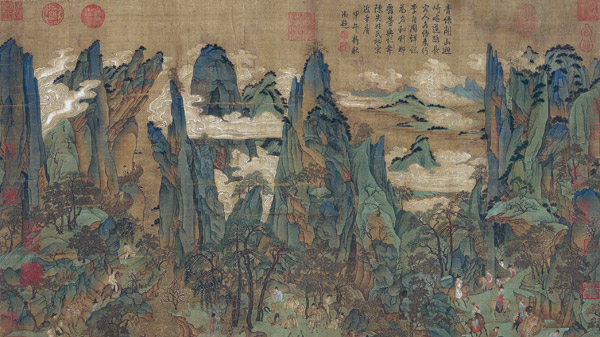Although, as one of China’s ancient capitals, Xi’an was the scene of much skullduggery, intrigue and rumbustious behaviour in the deep dark past, for much of the 20th century, its citizens lived quiet, somewhat uneventful lives. That, however, was all to change on 29 March 1974, when a small group of farmers set off to dig a well some 50km northeast of the city centre.
As they set about the task of pinpointing some elusive underground waterway, they noticed that their labours had uncovered some unusual-looking red soil, something that none of them was familiar with. Undeterred, they persevered, soon uncovering a life-sized pottery head and then several bronze arrowheads. Rightly sensing that the site they were astride concealed far more than a subterranean stream, they reported their initial findings to the local authorities. The city was never to be the same again.

What these sturdy rural engineers had stumbled upon would soon be acclaimed as the greatest archaeological discovery of the 20th century – the now-legendary Terracotta Army. Stowed beneath the silent, preserving soil for more than 2,000 years, this vast ceramic squadron was the work of more than 700,000 ancient artisans, all carrying out the bidding of the elders of the Qin Dynasty (221-206 BC). In total – as the wondering world was about to discover – there were some 7,000 figurines, many of which stood still battle-ready some 20 centuries on.
As the excavation activity broadened, neighbouring plots proved to be home to some 600 horses and more than 100 chariots. All of these were in perfect scale with each life-sized soldier, who all stood at more than 1.8m in height and weighed some 272kg each. This was regardless as to whether they were infantrymen, cavalrymen, archers or officers.
Although the centuries had inevitably muted their colour schemes, it was still possible to determine just how brightly decorated each figurine had once been. Careful examination revealed the army’s hair had once been uniformly black, while their skin tones had been various shades of pink. It also indicated that the mighty army had once been clad in variously-hued purple and red robes.

None of these revelations, however, answered the two questions that everyone was asking – Why was such an army ever created and what was it intended to defend its makers from? Although the driving force behind the pieces was soon identified – China’s first emperor, Qin Shi Huang, a man notoriously obsessed with his own mortality – his exact motivation remained lost in the mists of time.
Inevitably, just as the ancient army awoke from its slumber, so, too, did Xi’an itself. Suddenly, it was no long era historical backwater, renowned only as a place where things used to happen. Instead, it was at the very epi centre of the kind of global archaeological excitement not seen since the discovery of the tomb of the boy-king Tutankhamen in Egypt’s Valley of the Kings back in 1922.
Essentially, the uncovering of the Terracotta Army, together with China’s emergence at the very forefront of global tourism, has transformed Xi’an. While Beijing had long ago usurped its onetime role as China’s national capital, its preeminence as an international visitor destination is now inviolable.

Today, Xi’an and its longburied ceramic residents – now often collectively referred to as the Eighth Wonder of the World – attract countless domestic and international tourists every year. In 2016 alone, more that 150 million visitors came to pay their respects, netting the city’s hospitality sector some 120 billion yuan (US$18 billion) – 18 percent of the city’s total annual income.
One clear beneficiary has been the city’s housing market, which has soared, with government officials and developers now planning to create an additional hundred thousand homes, to address its rising population – a consequence of both the tourism boom and the success of China’s national urbanisation policies.
Similarly, knowing that the city’s historic legacy is not enough on its own to draw in and retain tourists, while persuading them to inject as much of their disposable income into the local economy as possible, Xi’an has been quick to transform its overall hospitality offering. This has seen the arrival of a string of multi starred hotels, Western-style shopping malls – often flaunting many of the same brands that woo shoppers in far-distant Shanghai and Beijing.

This transformation in its reputation has not just been restricted to academic circles. As a testament to this, a huge number of conferences and cultural symposiums have been held within the city’s precincts in recent years. In 2017, for instance, it was the host city for the Sino-French Culture Forum, an event renowned for gathering many of the best-known and brightest academic minds across a vast array of disciplines, including music, architecture and design.
It’s remarkable to think that that the core of this whole-scale urban transformation lurked in the city’s subterranean depths untouched for more than two millennia. It is more remarkable still that this unwitting gift from the city’s forefathers should have had such a widespread and far-reaching impact on the metropolis to this day.
As it is, it is all but impossible not to wonder just how many similar marvels lie undiscovered in China, Asia, Europe and the wider world – each one a ticking treasure trove that could reshape lives and reboot urban (or even national) economies, while introducing us to secrets so ancient that their very existence remains wholly unsuspected.
Text: Bailey Atkinson



